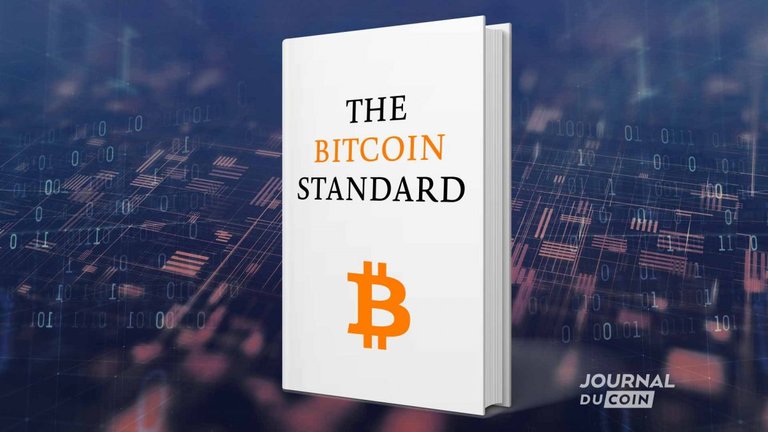
An antidote to the litany of 'The Blockchain, not Bitcoin' - April 6 has appeared a book for the least singular, fully in English and (for now?) Not translated into our French-speaking countries. 'The Bitcoin Standard' is an uncommon text in burgeoning literature dealing with the sphere of cryptocurrencies.

Written by Saifedean Ammous, assistant professor of economics at Lebanese American University, 'The Bitcoin Standard' is different from the classic texts available so far; because paradoxically enough, Bitcoin is strictly speaking not quite late in the book, which can almost lead the reader who was expecting to read a simple plea for Bitcoin to rest the book after the first chapters, then that the main questions and developments will actually concern and question the notions of money, growth, modes of government rather than simple Bitcoin, all from a libertarian angle, largely inspired by and in the right lineage
authors like Ludwig van Mises and Friedrich Hayek, economists of the so-called Viennese economic school, that is the Austrian Economic School.
But in fact, by choosing to focus his argument on the more specifically monetary aspects of the economy in general, and Bitcoin in particular, Mr. Ammous is aiming for and striking hard.
The Prologue is written by Nassim Nicholas Taleb, known for his series of books Incerto, questioning the notions of our relationship to uncertainty, the cognitive biases that affect us in such a situation, our tendency to underestimate the amplitude of a rare but possible negative consequence (what he calls the Black Swan), as well as the possibility of the existence of a so-called 'antifragile' state, which could define Bitcoin, that is to say something that does not
only to be reinforced by everything that attacks it.
The last ten years, during which Bitcoin continued its development and expansion, despite the various attacks of which it has been the subject, may seem to prove him right.
MNN Taleb then explains what will be the central element of the book: the distinction between healthy money and manipulable money, especially by governments, through various criteria that it considers essential, including the fact that a healthy currency must be at the same time commercially attractive on the temporal, spatial and on various scales.
So, to make good money, it must be easy to transport, easy to keep and preserve, easy to use for all types of transactions.
The first chapters serve primarily as an introduction to the very notion of money, and the detail of the now-classic triad that a monetary object must attain in order to be recognized as such: to be at the same time a store of value, a medium of exchange and a unit of account. Mr. Ammous gives many examples throughout history of the necessity of the changeover to a common currency to make trade and civilizational expansion more free than through the ancient barter, notably for example the famous stones of Ray ( Ray Stones). Mr. Ammous then goes on to demonstrate that what prefigures the use and preservation of a currency is in fact what he calls his stock-to-flow ratio, which must be high: in short, the The resource used must be sufficiently rare and difficult to produce to maintain its value. It gives several historical examples of populations whose currencies were greatly devalued when an external participant could disrupt the initial money market by drowning it under a 'copied' flow of money produced at a lower cost (the author cites, in particular, the case of populations in France).
Latin America and Africa relying on shells as a monetary base, drowning in a stream of worthless shells produced on an industrial scale by other foreign players).
The following takes us to the era of the first so-called metallic coins: the arrival of gold at the time, particularly byzantine and Roman empires. The author then presents the phenomenon of 'clipping' which consisted for a government to recover the coins already in circulation to recast them into new units devalued in gold, a very literal representation of the process of inflation.
According to Ammous, as long as these empires were in a dynamic of conquest, it was possible to make illusion, but when it was no longer the case, the fall was tough, and relatively fast.
The periods of the Renaissance and Belle Epoque are then presented for illustrative purposes to demonstrate that each time a civilization has relied again on a gold standard, the healthiest form of currency that is
for the author, because it is non-sovereign, this civilization has undergone extensive expansion and commercial, economic and cultural development.
In contrast to this ideal gold standard and its societies living in a supposed harmony, Mr. Ammous shows the striking contrast for these same societies when they had turned their backs on the gold-standard and they converted to state fiduciary money, left them
In conclusion, 'The Bitcoin Standard' is a book-reference for who is already a Bitcoin enthusiast, and can pretend to become so for any other curious, for a public at ease with English however.